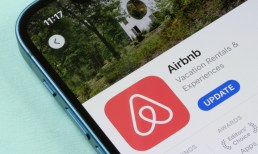With so many mobile wallets littering the landscape, it can be hard to keep up with everything that is already out there, let alone trying to keep track of all the newcomers. But some players are so large that their entrance into just about anything is going to be head-turning, no matter how crowded the field already is. Facebook — the owner of the eponymous social media site as well as Instagram and WhatsApp — with billions of users stretch across all corners of the globe, is one such player.
Which meant that its announcement last week of its second-biggest piece of payments news of 2019 (the first place award going to Libra and the opera that has followed its announcement) — the launch of Facebook Pay across all of its platforms captured an awful lot of interest from many corners.
In short, Facebook Pay, as described, is a tool to take all the commerce already happening in its marketplace, on Instagram and so forth and make it easier for consumers to pay quickly from within the application instead of moving offsite to finish a deal. The mechanism for this is a single sign-on functionality highly reminiscent of Google Pay — users register their preferred payments credentials, including mobile wallets, into Facebook Pay and then opt in to use those pre-saved methods on any Facebook property they’re transacting on. Users will also be able to view their payment history, update their settings and manage their preferred payment methods all from that single location.
That new and streamlined action for users on the front end with Facebook branding is being powered, in part, by PayPal, the latest expansion of a partnership between the two firms that is at this point over a decade old, Arnold Goldberg, PayPal’s senior vice president of global merchant products and technology, told Karen Webster in a conversation shortly after the news about Facebook Pay broke.
“What we’ve seen for years is that Facebook was going to be a social selling hub and as of today,” Goldberg told Webster. “What that translates into is that one-third of social sales are happening on one of Facebook’s properties.”
The problem, Goldberg emphasized, is that payments on those properties was a “wild west of sellers and buyers” and Facebook needed a place to enable “elegant, trustworthy interactions” that didn’t yet exist there.
Advertisement: Scroll to Continue
It’s something that, Goldberg said, PayPal is happy to build it for them. In fact, PayPal is happy to help build that for “all the other ecosystem players out there” looking to add payments to their bag of tricks for delighting and retaining customers. Even, he noted, if by doing so it looks like they might be working against PayPal’s own competitive interests.
The Importance Of Powering Payments
There is no shortage of players who want to jump into payments — and other connected financial services — Goldberg noted, because they are powerful glue that holds ecosystems together, and in some sense, completes them. Taking Instagram as the simplest example: It is a commerce hotspot and consumers want to be able to have a complete commerce journey while they are there.
Before Facebook Pay, he noted, that smooth experience came to an end at checkout time — when the consumers could easily find themselves “enjoying an experience reminiscent of shopping on Craigslist 20 years ago.” Knowing that an automated, in-house payment method that takes all that friction away is not hard. Knowing how to build that experience, on the other hand, is incredibly hard — which is why Facebook sought to expand its ongoing relationship with PayPal and have them build the infrastructure rather than trying to reinvent the wheel.
What Facebook has in common with Google and Microsoft and all the other brands that PayPal works with on the backend to make their consumer-facing payments ambitions possible, he noted, is that it isn’t a payments company and doesn’t aspire to become one.
“For us, payments is what we do all day, every day. We think about risk, compliance, fraud and regulations — and how to provide for all of those things while creating these beautiful experiences and enabling a platform that opens up the option of building those experiences for consumers.”
Whether it is powering its own front-facing wallets or other players — what Goldberg says that PayPal uniquely brings to the table is decades of experience in connecting a global network of merchants and consumers — and then leveraging that network to provide consumer choice worldwide when it comes to how they pay. PayPal wants them to choose their wallet, of course, and works hard to make sure that wallet competes on a global scale. But even if they don’t, PayPal is still powering and profiting off of their transactions.
And ultimately, Goldberg told Webster, PayPal’s best future is one where it enables choice, not where it tries to control it.
The Primacy Of Choice
From the outside looking in, he noted, PayPal certainly seems to be enabling many players with whom it is also competing. But, he said, from the inside, it is a lot more complicated than that. PayPal is an option in the Facebook Pay wallet that consumers can choose, and they hope they do, but more broadly, the market evolution point is such that consumers choose what works for them in context, but there aren’t players in payments who have broken outside their specific ecosystems. Facebook Pay users, for example, may number in the billions someday soon — but that is no promise they will ever use it outside of Facebook’s ecosystem. And that is a story, he noted, that has repeated many times: players with a lot of scale and power using payments as a device to improve their ecosystem, but not necessarily plays other than PayPal that is about building a global set of payments rails that can power a lot of separate ecosystems.
“Not everyone can emerge from their own ecosystem and franchise and have success generally — in fact, almost no one can. We can say from personal experience at PayPal that it is incredibly difficult. Many unique tailwinds came into play that gave use escape velocity and our work is still a work in progress,” Goldberg said.
Moreover, he said, trying to figure out how to reinvent a wheel PayPal has spent over two decades at already is increasingly looking like a bad investment of time and energy — and the wrong question for players with an interest in payments to be asking. The right question, he said, is about the consumer and how to provide what they want in a way that makes room for more than one player to win by providing it.
For PayPal, Goldberg emphasized that means enabling choice even when that means enabling competitive wallets. PayPal’s view of the world — and the world of wallets — is that it’s better for everyone if there is an ecosystem with more digital transactions in general, not just more transactions for PayPal.
“The answer there is really clear,” he said. “It will always come back to the customers and the merchants and what they want. We cannot win by preventing choice — because we’ve seen that both consumers and merchants clearly reject that model.”




